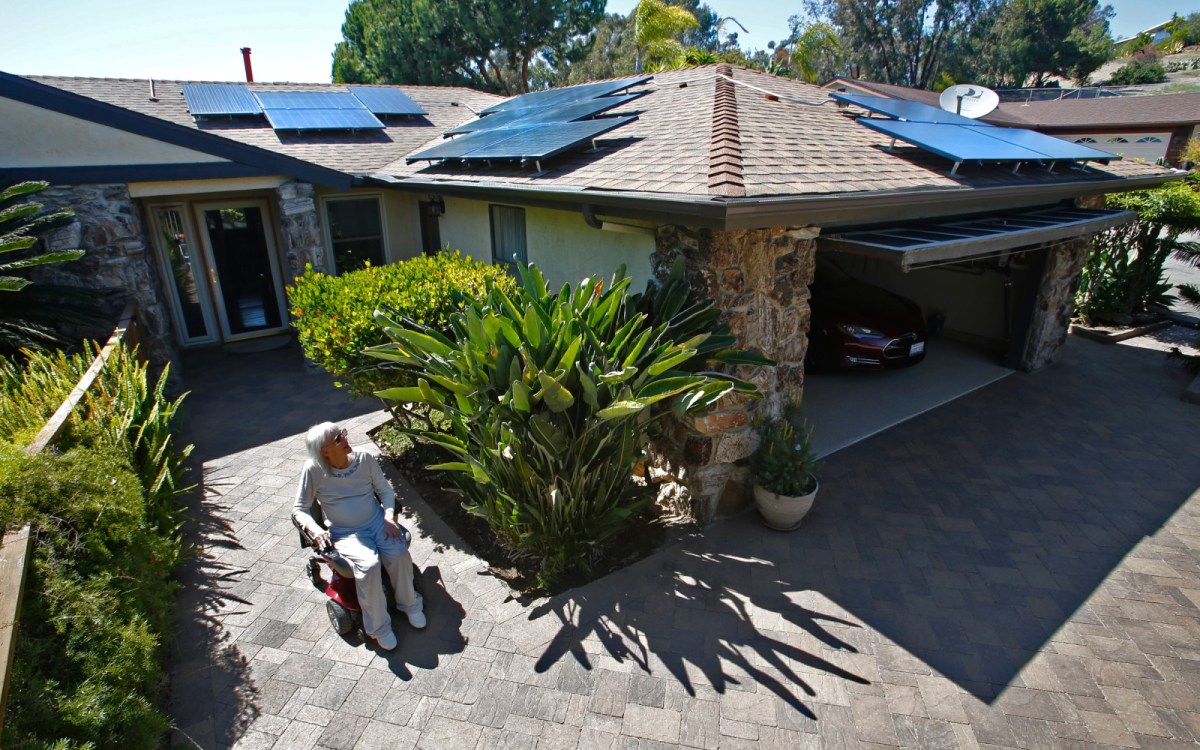
The vision
Your grandmother loves to take you walking downtown, pointing out her favorite architecture. She helped build this city, and still it’s always changing. In her childhood, she tells you, homes and buildings regularly fell victim to things like hurricanes, fires, floods, blizzards — which were worse back then. People had to rebuild, and they kept rebuilding the same way, while the storms got stronger, the seas higher. She tells you of this for the umpteenth time.
“And why was that, Gran?” You ask, knowing the answer.
She smiles. “Because they only wanted to keep nature out, instead of working with it.”
— a drabble by Claire Elise Thompson
The spotlight
Globally, our built environment contributes around 40 percent of all greenhouse gas emissions. Both construction and the energy it takes to maintain buildings pose a problem for the health of our climate. But shelter is one of our most basic needs — and the homes and businesses that we rely on are also vulnerable to climate impacts.
Wildfires, floods, and other increasingly frequent extreme weather events claim thousands of homes each year. As those threats loom larger, they’re pushing many residents and companies to think about building back, or building anew, with materials and designs that can withstand the unique climate perils of the areas they’re in.
As the world’s building stock is expected to double by the middle of this century, the building sector has a massive role to play in ensuring a liveable future. In this newsletter, we’re exploring two examples of buildings designed to both offer greater climate resilience and lower carbon footprints — in places facing very different risks.
![]()
Container homes built to withstand hurricanes in Puerto Rico
Carla Gautier Castro witnessed firsthand the damage that extreme weather can do to buildings and communities when she worked as a construction inspector for FEMA in the aftermath of Hurricane Maria. She had moved home to Puerto Rico just months before the hurricane hit in 2017, after pursuing her passion for architectural studies in Boston.
The devastation that she saw, as well as the frustration from people working around unwieldy, bureaucratic processes to get relief, made her want to create better options — permanent homes that could withstand hurricanes and earthquakes, and also self-contained units that could be quickly deployed in the event of a disaster.
Gautier Castro (who was featured on our 2022 Grist 50 list of emerging climate leaders) founded KONTi Design Build Studio in 2018, when she began designing modular houses made from sturdy, readily available recycled materials: old shipping containers.
She wasn’t the only one with the idea. “What ended up happening here in Puerto Rico is that, after Maria and after the earthquakes, container homes became super fashionable,” she says, because they offer an affordable building option that also has a trendy aesthetic. But, she adds, the majority of companies in the space don’t supply anything more than the home itself, which means that the house might be eco-friendly, but it won’t necessarily be resilient. That depends on what the container is made of, and what kind of foundation it’s built on.
“I can’t ever use a refrigeration container, for example, because the walls of that are made out of aluminum,” says Gautier Castro. To withstand severe winds, she only trusts steel containers. She also emphasizes the importance of things like soil studies and proper foundations, as would be necessary with other types of building projects. “That part is very individualized to each client and each location,” she says.
Also tailored to each project are the systems that surround the house itself. In Puerto Rico, around 60 percent of homes rely on individual septic systems, and KONTi has incorporated wastewater treatment and reclamation designs into the landscaping of some of its projects. “As much as we can, as much as the budgets allow us, we’re trying to make these houses completely off grid,” says Gautier Castro.
Last year, a few days after Hurricane Fiona, Gautier Castro took a road trip with one of her engineers to see how all five of KONTi’s existing builds had fared. “Interestingly enough, absolutely nothing happened to any of them,” she says.
Developing self-contained units that can be deployed more quickly for disaster relief is still an area of experimentation — and Castro admits it’s proven more complicated than she thought. All the systems that a house needs would have to be held in one container for it to work. “So, for example, instead of doing a bio-garden system, which is site specific, we would be doing composting toilets or something like that,” she says. “And instead of having rainwater collection systems, it would have to be atmospheric water collection systems, which are very expensive.” As the team continues to troubleshoot those challenges, her ultimate vision is to turn the company’s workshop into a factory, which would create jobs in Puerto Rico while helping other communities affected by disasters.
— Claire Elise Thompson
![]()
Earthen construction for fire resistance in Colorado
Matteo Rebeschini was home with his two children in Superior, Colorado, when he noticed tumbleweeds dancing in the field in front of his house. They shifted from left to right as the wind erratically changed direction.
Then Rebeschini saw smoke on the horizon, and smelled burning. Within a few minutes, there were flames in his yard.
His wife, Melanie Glover, was out with the family car, so he and the kids had no way to flee. Rebeschini, his kids, and two dogs had to be evacuated by the police. The sky turned dark and rained ash. “The energy was something I’d never felt before,” he says. “It felt very powerful and evil.”
It was December 30, 2021, and the Marshall Fire was ripping through Boulder County. The fire destroyed more than 1,000 homes and killed two people. Rebeschini and Glover’s home burned down, as did every other house in the Sagamore subdivision where they lived.
The experience was traumatic. But when it came time to decide whether to rebuild or move away, the family chose to stay. Their land looked out on wide open space and the Flatirons mountains. “It’s a very special location,” says Rebeschini.
They knew, however, that they did not want to build the same kind of house. When the fire neared, the house had shaken violently with the wind. Smoke permeated the walls. The structure ignited in minutes. “I could never live in a house built the same way again, because I saw how quickly it happened,” says Rebeschini.
The couple began looking into concrete, but didn’t like its insulation capabilities, or its fire resilience. Then they drove past a sign for Colorado Earth, a design-build company that makes compressed-earth blocks with byproducts from a nearby granite quarry.
Earthen construction, a method that uses a sand-and-clay source as its primary building material, has been around for 10,000 years. In Colorado, it can be seen in centuries-old settlements built by Native Americans and in the trading posts of the 1800s. But after World War II, when the country needed to build a lot of homes quickly, wooden frames became the norm. “I see framing going up now and it just looks temporary to me,” says Lisa Morey, who founded Colorado Earth after studying earthen construction in New Zealand and writing a book on the practice. “It’s quite vulnerable.”
According to Morey, earthen construction can provide benefits for both people and the environment. The homes are sturdy, quiet, and energy-efficient — the blocks act as thermal storage, keeping an even temperature inside. They also absorb vapor, preventing mold and maintaining healthy humidity levels.
And of course, the blocks are fireproof. As a firefighter living in a Colorado Earth home said in an information session for Sagamore residents, “Dirt doesn’t burn.”
The company is currently building Rebeschini and Glover’s new home, and several more houses in the Sagamore neighborhood.
Fireproof construction materials don’t mean that a house is impervious to flames. A lot of fire protection depends on how a roof is constructed, as embers can be sucked into a home through the roof’s venting. Metal roofs and non-vented roofs help, but they can be more expensive.
Rebeschini and Glover opted for a non-vented roof, but they also know that building with earthen materials isn’t about being able to just sit inside your home while a wildfire rages outside. “It’s the feeling of knowing that even if you have to evacuate, you’re going to have more time,” said Rebeschini. “You’re not going to have smoke coming through the walls.”
Like Gautier Castro’s shipping-container homes, it’s an example of how rebuilding from climate disaster can be tailored to local contexts in a way that both increases resiliency for the future and drives sustainability.
“We’re building something that has the same lifespan as its foundation,” says Morey. “The bones of the structure are meant to be here for a very long time.”
— Gabriela Aoun Angueira
More exposure
- Read: more about Gautier Castro’s work, along with other rebuilding efforts in Puerto Rico (CNN)
- Read: Adobe Homes for All Climates, Morey’s book about earthen construction and its climate benefits
- Read: about biophilic design, the concept of bringing natural elements into our buildings (Grist)
- Read / watch: an overview of key climate-resilient building concepts (U.N. Environment Programme)
- Watch: a video about cross-laminated timber, a low-carbon building material that can be used for skyscrapers (Grist)
See for yourself
From wildfires to hurricanes, climate impacts look different in different parts of the country, and the world. What are some of the most pressing challenges where you live? Have you taken steps to make your home safer, or to build resilience in your community? Reply to this email to tell us about it.
A parting shot
Solar power coupled with battery storage can make homes and buildings more resilient in the event of blackouts — and could even help bring stability to the wider grid. At this home in Oceanside, California, resident Cassina Tarsia generates enough electricity to keep her lights and appliances on, and power her electric wheelchair, her electric car, and a storage battery.




